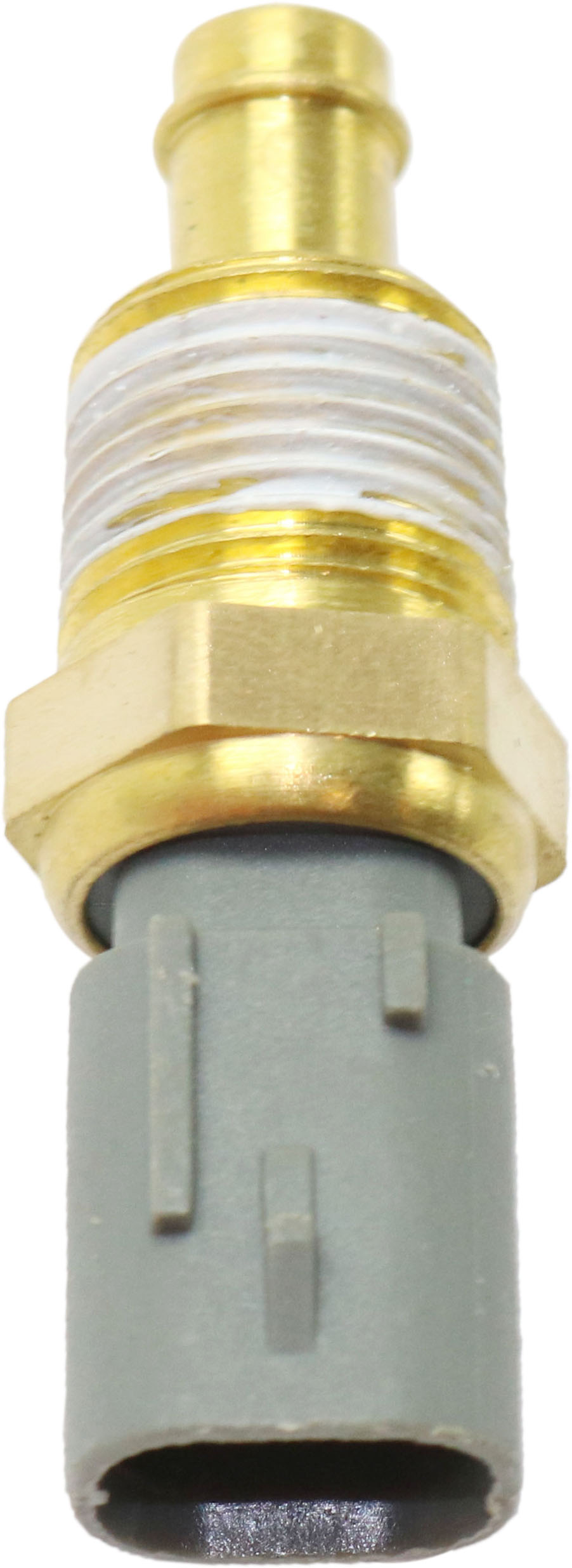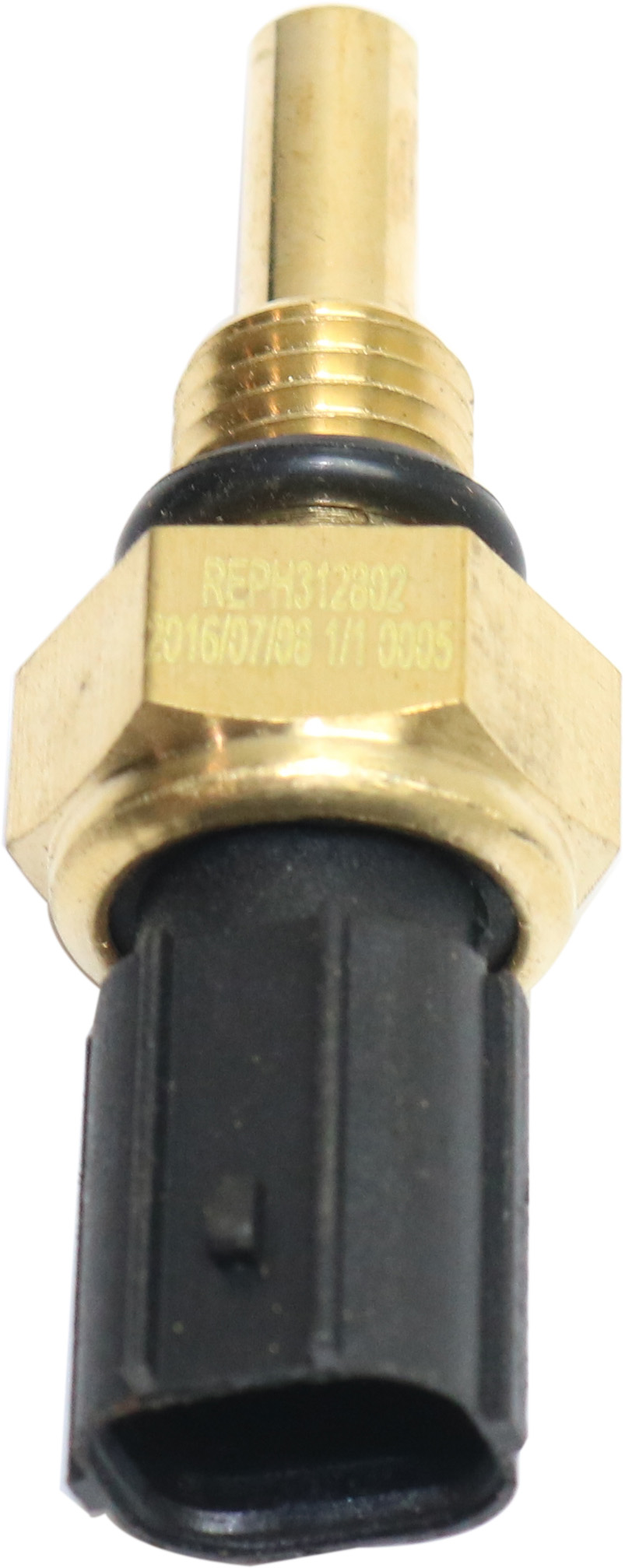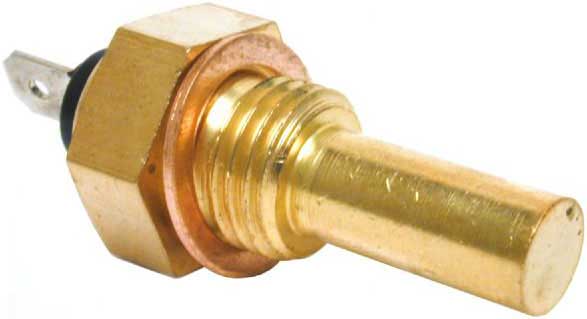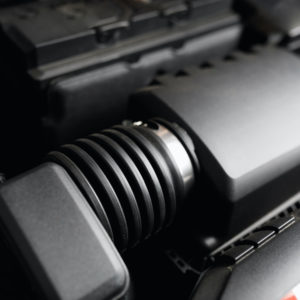Proper engine temperature must be maintained for the engine to function well. If the engine runs cold, it can consume excessive amounts of fuel, affecting the overall performance of the vehicle. If the engine runs too hot, it can permanently damage your engine and its surrounding components.
The engine cooling system maintains the optimal operating temperature of an engine. The engine coolant absorbs heat from the engine, while the sensors monitor its temperature. The P0117 code indicates a problem with one of the engine coolant temperature sensors in your vehicle. Find out more about this error code and what to do in case you encounter it using this short guide.
What Does the P0117 Code Mean?
Diagnostic trouble code (DTC) P0117 stands for “Engine Coolant Temperature Sensor 1 Circuit Low.” It indicates that the vehicle’s powertrain control module or PCM has detected a low voltage input from the engine coolant temperature (ECT) sensor 1.
The ECT sensor monitors changes in the temperature of your engine’s coolant. The information it obtains is sent to the PCM, which uses the data to regulate the air-to-fuel ratio, cooling fan operation, ignition spark timing, and other powertrain-related outputs.

Once the PCM detects a signal voltage that’s lower than the normal operating range of the sensor, the OBD code P0117 registers in your vehicle’s memory. The low signal that the PCM detects from the ECT sensor can mean that the engine coolant is excessively hot.
For a technical understanding of how the engine coolant temperature sensor can trigger OBD codes like P0117, read our in-depth explanation here.
Read on to learn the possible causes of P0117, as well as symptoms.
What are the Possible Causes of the P0117 Code?
There are a lot of issues that could trigger the engine code P0117. Below are just some of the possible causes of P0117:
- Defective engine coolant temp sensor
- Cooling system problems leading to engine overheating
- Damaged or corroded engine coolant temp wiring or connection
- Air pocket in the coolant system
- PCM issues

What are the Common Symptoms of the P0117 Code?
Should you encounter the P0117 code, there are a few signs you have to look out for. This code points to issues with the ECT sensor and high engine coolant temperature. Below is a list of the most common symptoms of this trouble code:
- Activated check engine light
- In some cases, the engine may be hard starting and or get poor fuel economy
- Engine may run rough
- May not idle
- May start and then die
- Engine overheating
How to Diagnose the P0117 Code
WARNING: To avoid serious burns, never remove the coolant fill cap on a hot engine under any circumstances.
Like other OBD-II codes, the P0117 code has multiple possible causes. It’s important to pinpoint the exact reason behind the issue to determine a proper fix. Here are some video resources that can help you reach an accurate diagnosis:
How to Fix the P0117 Code
There is no single solution to the P0117 code because there are a lot of reasons why this code is set. Repair steps will also vary depending on the vehicle’s make and model. That’s why proper diagnosis is important.
If you’re trying to resolve the issue yourself, you’ll need trusted resources that can give you accurate information on repairs, component location, and diagnosis. Repair guides and manuals that contain factory repair information, like ALLDATA, will give you step-by-step instructions on how to address the problem. Consider getting an ALLDATA subscription to expand your knowledge base on OBD-II diagnosis and repair.
Other Notes About P0117
Most of the symptoms of the P0117 code indicate performance issues with the engine. This means it must be resolved immediately. P0117 can put the vehicle in a failsafe mode, which causes the car to be relegated to a certain speed and/or gear range.
Address the issue immediately. Stop driving the vehicle and go to a shop as soon as the code registers or a combination of its symptoms appear. Ignoring this trouble code may lead to further damage to your engine and your vehicle.

How the Engine Coolant Temperature Sensor Can Trigger OBD Codes
Engine coolant (ECT) and intake air temperature (IAT) sensors are what is referred to as “negative temperature coefficient.”
The filament in a lamp and copper wiring are both “positive temperature coefficient,” meaning that as the temperature of the conductor increases, the resistance increases as well. But lamp filaments and copper wiring aren’t temperature sensing elements. The Thermistor element of ECT and IAT sensors is designed to react to heat in a specific and predictable way.
The ECT sensor is either submerged in the engine’s coolant in a strategic spot so that it changes resistance as the temperature of the coolant or it measures the temperature of the cylinder head(s), because the heads are the hottest part of the engine.
Two-wire temperature sensors of this type typically receive 4.6 volts on one wire, and the other wire is the “signal return” (ground), with both wires coming from the ECM/PCM. Inside the PCM there is a 5 volt rail that feeds each two wire temperature sensor, but the 5 volts passes through a current dropping resistor (there is a different resistor for each sensor), thus the voltage delivered to the sensor is only 4.6 volts, which is what is reflected when the sensor is disconnected.
Some ECT sensor circuits are wired so that the sensor circuit will “shift gears” to maintain temperature resolution voltage – the sensor’s voltage may drop until a certain temperature is reached and then jump back to a higher voltage and begin to drop again. GM and Chrysler are the most notable platforms that do this.


The ECM/PCM is measuring sensor voltage between this internal ECM/PCM resistor and the Thermistor built into the ECT. So, if either sensor wire (ECT signal or signal return) is cut or if there is an open circuit in the sensor itself, the voltage will read 4.6 volts, which equates to -40 degrees – which is where Fahrenheit and Celcius cross. -40 is the same temperature on both scales. This throws a P0118 code.
However, if the ECT signal wire is shorted to the signal return (ground) or if the ECT signal wire is shorted to the engine block, the sensed voltage will drop to zero. Other than a scenario where the engine temperature is at meltdown levels (275° F), this shorted wiring syndrome is the only scenario that will store a P0117 code.
Some vehicles use this sensor via the vehicle network to report engine temperature to the Instrument cluster but more commonly, the cluster temp gauge gets its information from a dedicated engine coolant temp sensor. For that reason, if a P0117 has been stored but you’re noticing normal temperature on your gauge, it may be a skewed sensor.
Where To Get Parts To Resolve the P0117 Code
Leaving the P0117 code unresolved might leave your engine running rough. This code is usually caused by a defective engine coolant temperature sensor. Other engine issues also occasionally accompany this DTC, so getting it resolved as quickly as possible is in your best interest. Thankfully, finding a new coolant temperature sensor is quick and easy at CarParts.com.
At CarParts.com, we have a wide selection of coolant temperature sensors and other parts for your vehicle. Finding the right engine coolant temperature sensor for your vehicle is also easy with our built-in vehicle selector. Pick your vehicle’s year, make, and model so you’ll see only parts that fit. We only source our coolant temperature sensors from the most trusted manufacturers in the industry, so you know you’re getting your money’s worth.
Order a new coolant temperature sensor in just a few easy clicks at CarParts.com today.
Shop this Project



Any information provided on this Website is for informational purposes only and is not intended to replace consultation with a professional mechanic. The accuracy and timeliness of the information may change from the time of publication.






















